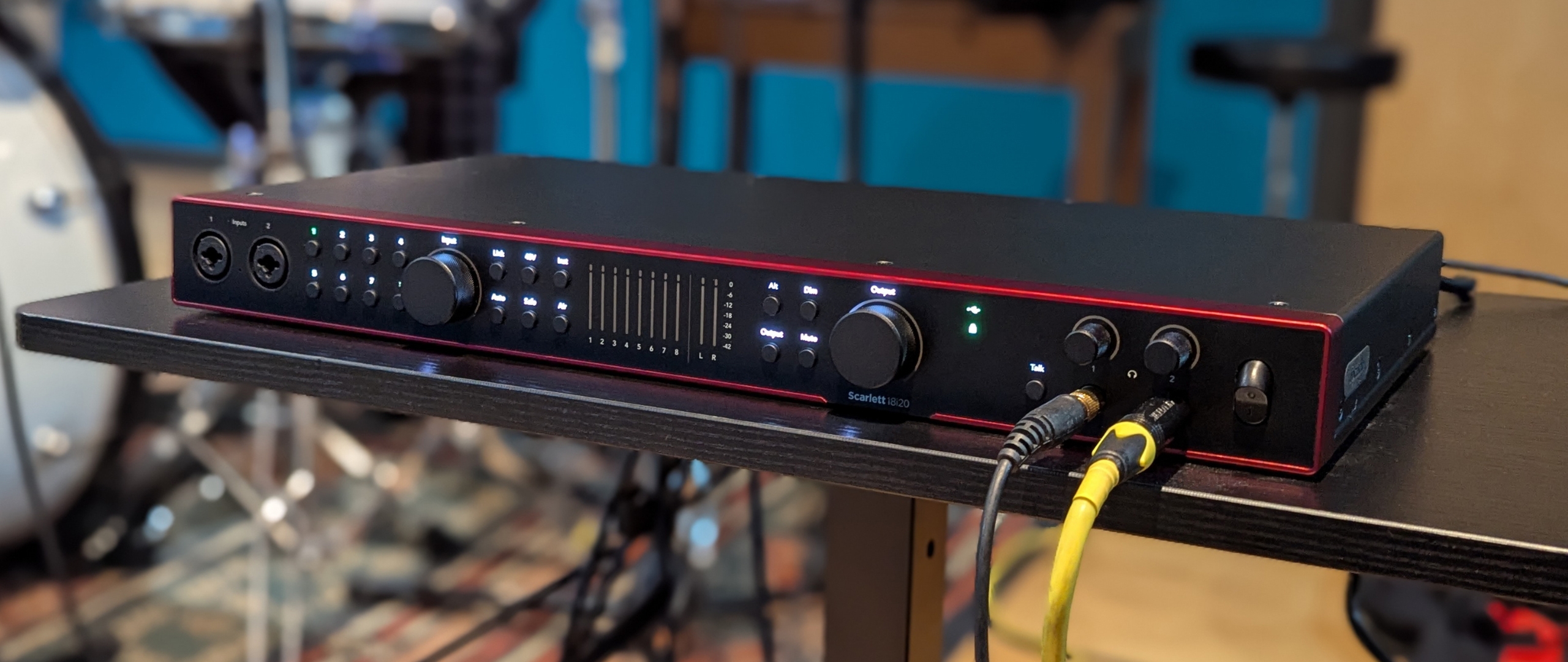MusicRadar Verdict
Great sounding preamps aside, the ultimate strength of the Focusrite Scarlett 18i20 is its uncanny ability to make multi-micing and recoding sources an absolute breeze. Powerful software and plenty of features make it the perfect candidate for upgrading your studio to something more professional.
Pros
- +
Surprisingly easy to use
- +
Enough inputs to record drums
- +
Slave another mic pre for more inputs
- +
Rock solid build quality
Cons
- -
Overkill for most home producers
- -
Some functions only available via software
MusicRadar's got your back
What is it?
At some point there comes a time in every home studio engineer’s progression where they decide they need more inputs and outputs. Whether it’s wanting the ability to track multiple instruments at the same time, record acoustic drums, or just add more synthesizers to your rig, it can be a little daunting taking that step up from your basic 2-in, 2-out audio interface.
It needn’t be though, and the Focusrite Scarlett 18i20 4th Gen is the clearest demonstration of that I’ve encountered thus far. Giving you 8 mic preamps, 10 line outputs, MIDI in and out, as well as the ability to slave additional inputs via ADAT, the 18i20 offers a lot of connectivity for well below a grand. On paper, it’s the perfect stepping stone to expanding your studio.
It’s not alone though, there are the more ‘pro’ feeling rack mount units from Apogee, Audient, and Universal Audio that offer a similar amount of connectivity, although in most cases will cost you a lot more. Meanwhile, more home studio-friendly offerings come from PreSonus, Behringer, and Motu, which offer 8 inputs for around the same price or in Behringer’s case, considerably less.
Ten years ago the earlier iterations of the 18i20 might have been the only reasonable choice for the home studio enthusiast looking to take a step up, but we’re not exactly low on choice these days when it comes to 8-channel interfaces. So is this where should you be spending your money if you’re looking to add more ins and outs to your studio? Let’s find out…
Build quality
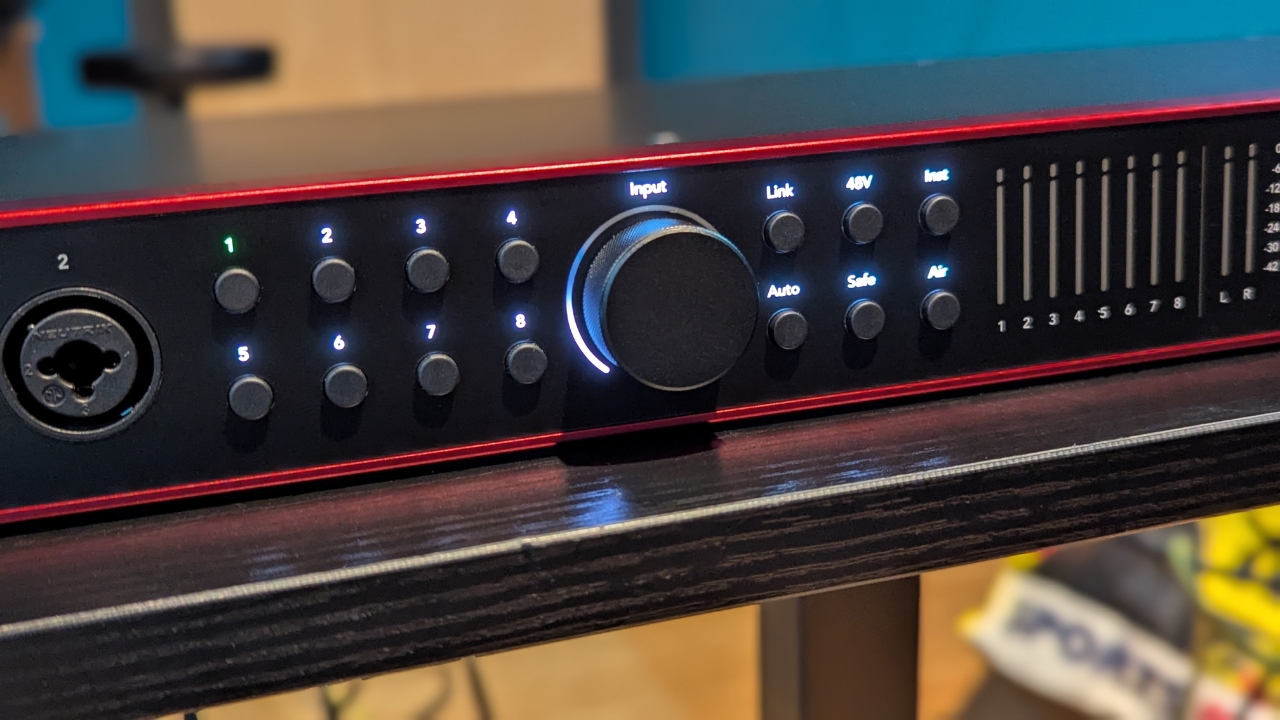
I’ve reviewed nearly all of the Scarlett 4th Gen interfaces from the Solo right up to today’s subject, the 18i20. They all share very similar design ethos and build attributes, which means that deep red colouration of the outer metal shell, slick black frontage with light-up text, halo lights around the knobs, and in the 18i20s case, small meters for monitoring your inputs live.
It’s a very solid-feeling unit weighing in around 3.5kg and due to its size, it won’t fit in your backpack. Realistically it’s designed to stay at the heart of your permanent studio space, but I still found it relatively easy to transport to a recording session in my local studio which has an excellent drum room. If you’re going for a permanent setup it comes with 19-inch rack ears that affix to each side of the unit, but you’ll need to provide your own screws. Underneath the rubber feet are easily removable if you things are particularly tight in your setup.
Across the front of the unit all the knobs, switches, and buttons feel rock solid which, if you’ve used any recent Focusrite gear, is a given. Overall, it’s a very solidly put together unit which definitely feels on the more professional level versus a lot of similar equipment that’s more geared towards beginners and home recording.
Want all the hottest music and gear news, reviews, deals, features and more, direct to your inbox? Sign up here.
Software & installation
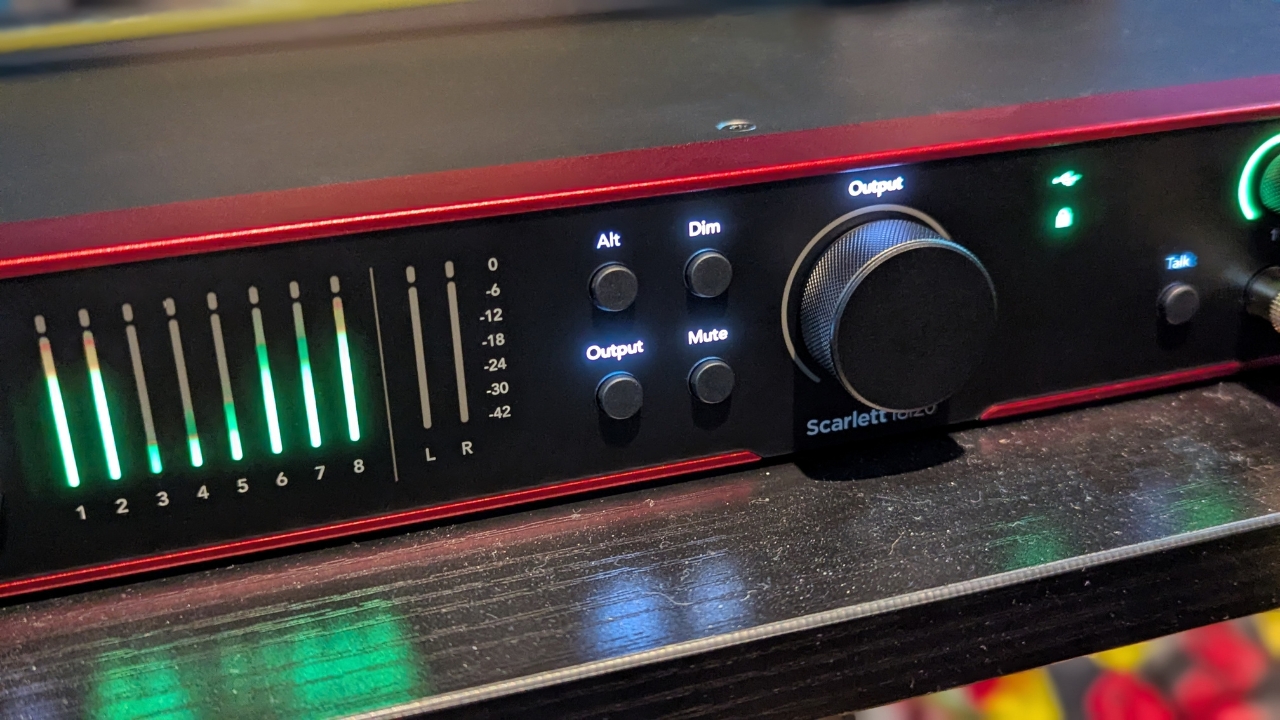
Getting the 18i20 setup on my MacBook Pro was a breeze, as is typically the case with OS-equipped machines. I downloaded the Focusrite Control App which required an initial update taking around two or three minutes, and with that, I was ready to rock. My chosen DAW Pro Tools recognized it immediately and I had zero issues immediately setting up my session for a drum recording utilizing eight microphones.
Although I’d imagine most users will have settled on software before they’re at the stage where they want to buy something like this, Focusrite does include bundled software with the 18i20. The Hitmaker Expansion includes three basic DAW offerings in the form of Ableton Live Lite, Pro Tools Intro +, and six months of FL Studio Producer Edition. You’ll also get amp simulator software, a drum VST plugin, plus a compressor, EQ, and various other tools to get you started.
Usability
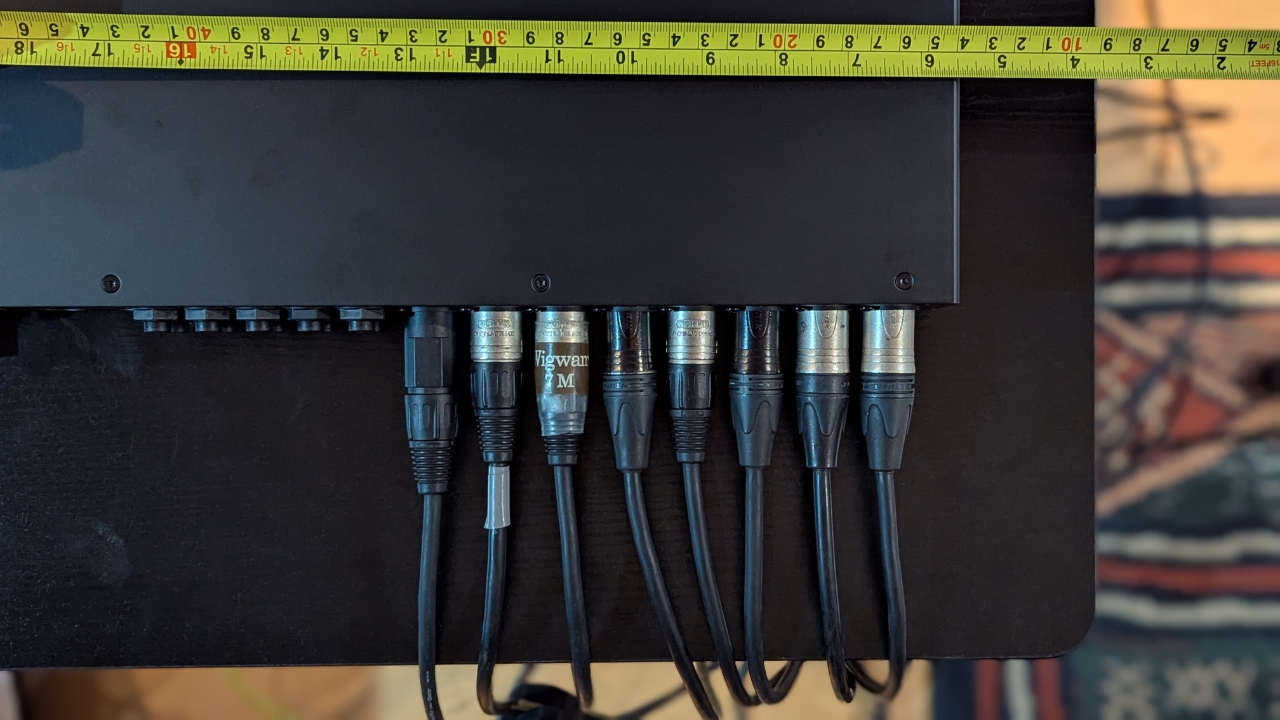
For the main portion of my testing, I took the 18i20 to a local studio to record some drums for a new project I’m working on. I initially set it up at home which took around an hour, including updating the unit, creating all my tracks, setting up my project, and assigning inputs, which was much quicker than I anticipated. I encountered zero issues during this process, which was very reassuring going into a session with a brand-new interface.
At the recording studio, I set up my interface close to the drum kit, micing up the kick, snare, both toms, stereo overheads, and a room mic to make sure I used all eight of the inputs. At this point the Focusrite Control app became invaluable, allowing me to get my input levels spot on quickly and easily while the drummer practiced the song we were recording. The app allows for remote control of the hardware unit, letting you use all of the functionality without having to touch a physical button.
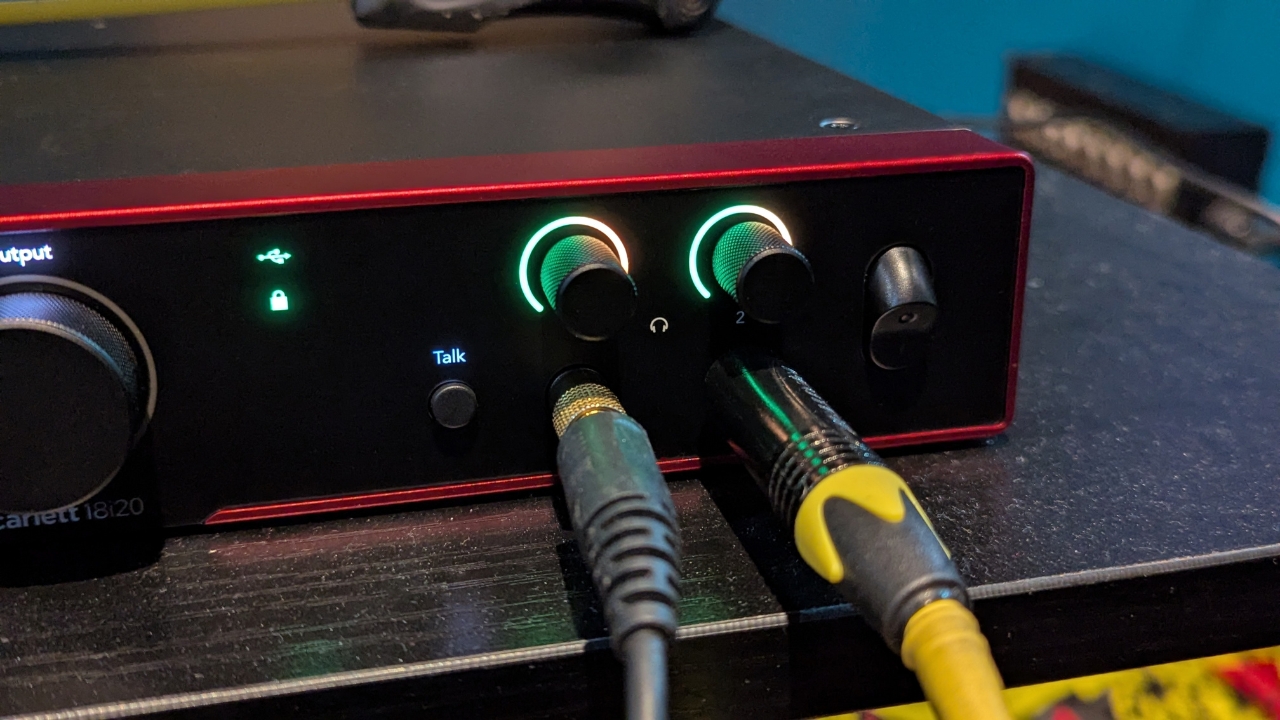
If you prefer using buttons it’s simple enough to get acquainted with the physical controls on the front of the unit. Each channel has a numbered button which once pressed lets you link a pair of channels into a stereo channel, add phantom power, change from a mic to an instrument input, add auto gain, add clip safe, or two stages of presence via the ‘air’ button. You also get an ’alt’ button that lets you switch between outputs, a dim switch to mute the output signal by 18dB, a mute button to silence your outputs, and there’s a talkback function that you can route through the software.
The two separate headphone outs are probably less critical in a permanent home studio setup, where you’d likely have a headphone amp, but I certainly found them useful in my scenario as I was able to give separate mixes for myself and my drummer. There was plenty of gain on the outputs too so the drummer was able to hear the scratch and click tracks clearly alongside the sound of the drums in the room itself.
Sounds
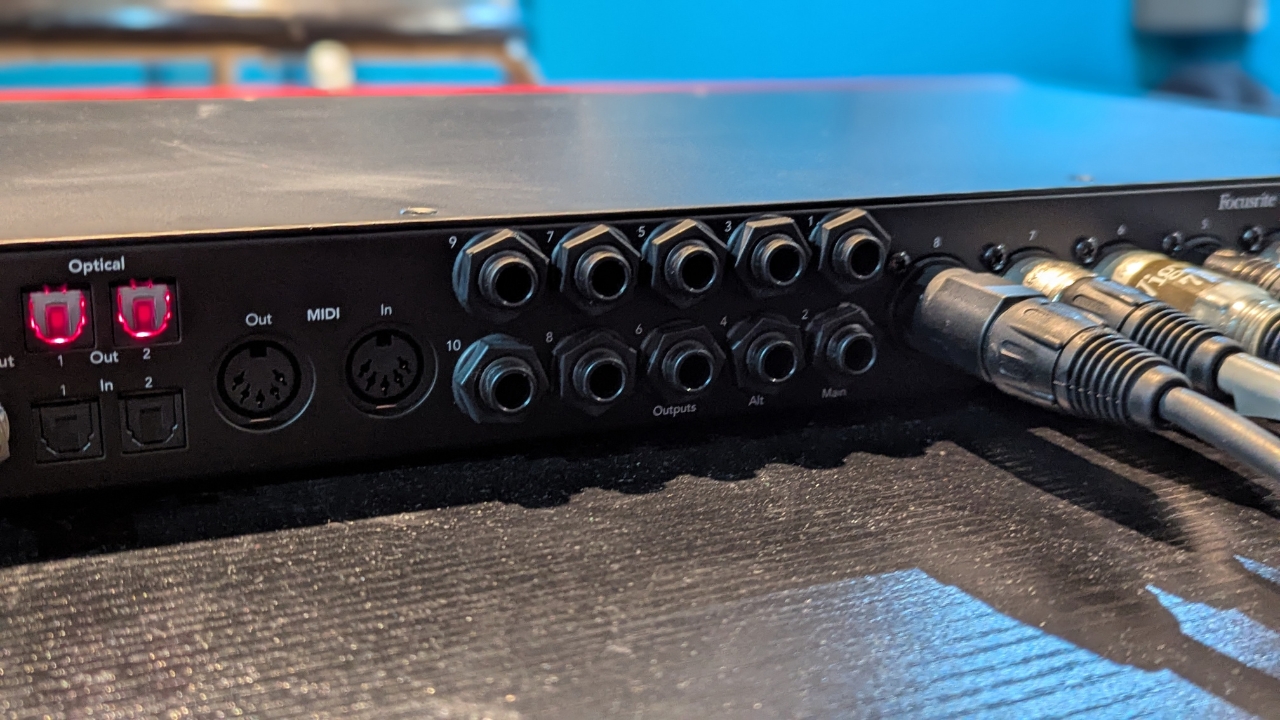
If you’ve read any of my other reviews you’ll know I don’t like judging something so subjective as sound. For what it’s worth though, I do love the sound of the preamps in the latest Focusrite interfaces and the 18i20 is no different. The drum sounds I captured during my session were clean and clear, perfect for being treated later down the line with EQ, compression, and other more creative effects.
The stages of presence boost via the ‘air’ button are subtle but noticeable. One press gives a little boost to the treble side, making your sound more forward in the mix. A second press keeps that EQ boost but adds some more saturation to the sound, making them a little bit hairier. It’s all subtle stuff, but definitely useful if you want some extra pizazz and your raw sound sources.
I tried the 18i20 with dynamic, condenser, and ribbon microphones and each type worked fantastically well. There’s plenty of gain on tap from the inputs even to drive the typically quiet ribbon microphones I used, all without requiring the addition of a FetHead. Sonically I have zero complaints about the quality of the drum sounds I was able to achieve, and I’d feel comfortable using it in any recording situation.
Verdict
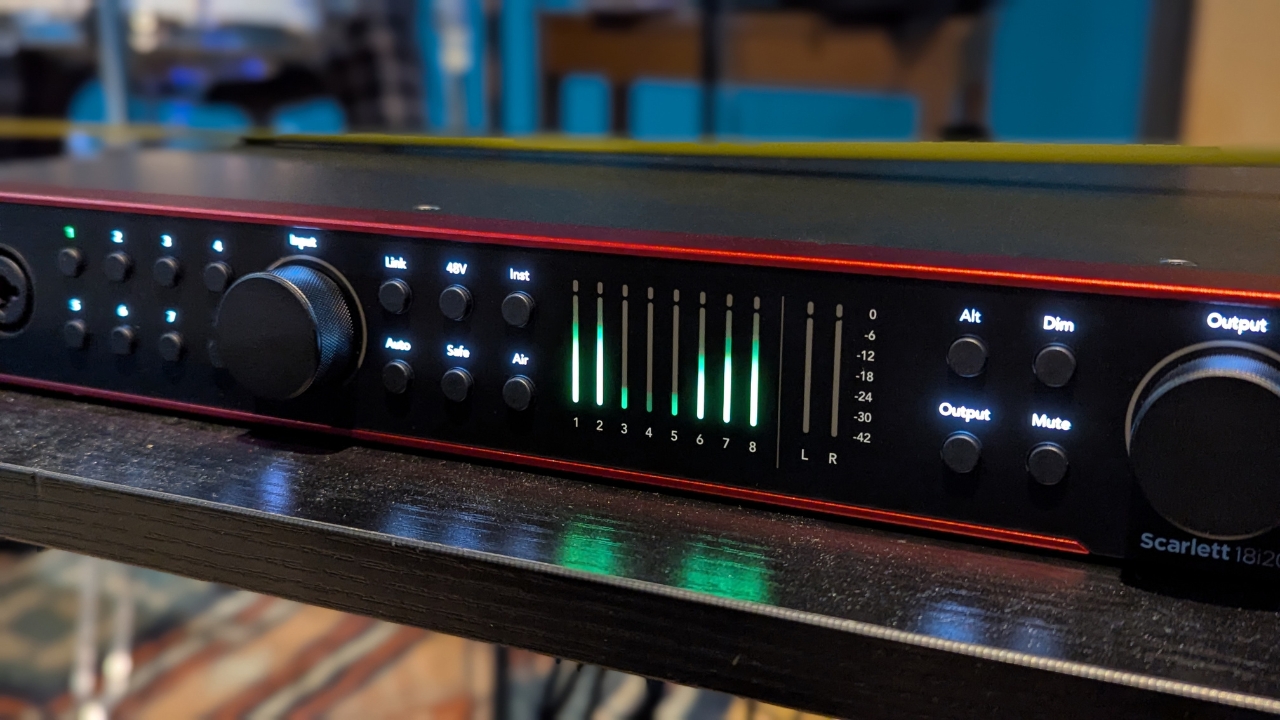
For me, the Focusrite Scarlett 18i20 4th Gen sits in that Goldilocks zone when it comes to 8-channel interfaces. It’s not dirt cheap, but it’s not out of the reach of the majority of home producers and engineers. Despite the lower cost, it has the build quality to match those more rugged, professional-grade rack mount units. It’s equally at home travelling to remote recording sessions as it is living in a permanent studio setup.
Ultimately though, and this is where all the Focusrite 4th Gen interfaces excel, it’s the usability that makes them so good. I do not doubt that even a complete beginner could get the 18i20 set up and start making multi-mic recordings it’s that easy to use. The plethora of additional features combined with the power of the Focusrite Control App makes it incredibly accessible, even if you’ve not dealt with any more than 2-inputs previously.
Specs
- Price: $649.99/£539.99/€729.99
- Simultaneous I/O: 18 x 20
- A/D Resolution: 24-bit/192kHz
- Built In DSP/FX: N/A
- Number of Preamps: 8
- Phantom Power: Yes
- Analog Inputs: 8 x XLR-1/4" Combo (Rear), 2 x XLR-1/4" Combo (front)
- Analog Outputs: 10 x 1/4"
- Digital Inputs: 1 x Coax (S/PDIF), 1 x Optical
- Digital Outputs: 1 x Optical, 1 x Coax (S/PDIF)
- MIDI: In and out
- Headphones: 2 x 1/4"
- Power Supply: Standard IEC AC Input (cable included)
- Contact: Focusrite
Hands on videos


Matt is a Junior Deals Writer here at MusicRadar. He regularly tests and reviews music gear with a focus on audio interfaces, studio headphones, studio monitors, and pretty much anything else recording-related. Matt worked in music retail for 5 years at Dawsons Music and Northwest Guitars and has written for various music sites including Guitar World, Guitar Player, Guitar.com, Ultimate Guitar, and Thomann’s t.blog. A regularly gigging guitarist with over 20 years of experience playing live and producing bands, he's also an alumnus of Spirit Studios, where he studied studio engineering and music production.
